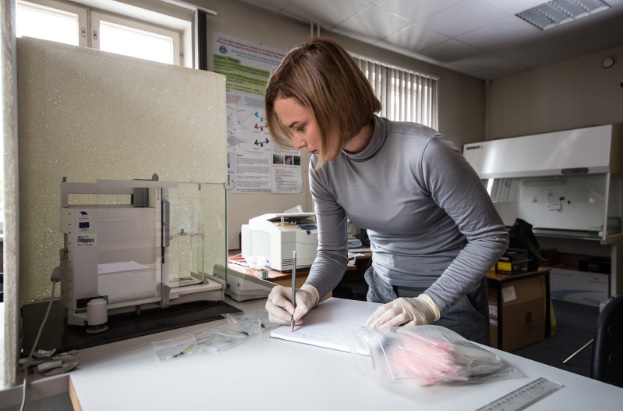Tuul Sepp works as a researcher of animal ecology at the University of Tartu. Her studies mainly focus on evolutionary ecology, and anthropogenic impacts on wild animals. Recently, she spent two years as a Marie Sklodowska Curie fellow at the Arizona State University, USA, studying urbanization of birds. She has received various awards for her activity in science outreach. In 2019, she was awarded the L´Oreal Baltic fellowship “For Women in Science”. She currently serves as the Vice-president of the Estonian Young Academy of Sciences.
Recently, the focus of my work has been on marine pollution. Estonia is located next to one of the world’s most polluted marine areas, the Baltic Sea. I have worked with seabirds there for more than a decade. A few years ago, I designed a study to assess the exposure of gulls to pollutants by looking at the changes in their gene expression. For a study involving animals, one has to ask for an experimental licence. In my case, the committee’s first response was negative: they thought that common gulls are not the best model species for assessing marine pollution effects, since they also sometimes feed on the mainland.

I had definitely seen a gull returning from mainland to the breeding colony with a dirty beak and breast feathers, having feasted with earthworms on some nearby field, yet, I chose to disagree with the committee. Having explained my position, I got the licence for my study, but also decided to turn my attention to another species – the flatfish.
Why flatfish? They live in close contact with the sediment, where most of the pollution has accumulated over the last century. They have also been studied as a model organism in ecotoxicological research for some time, so adding an angle of evolutionary biology to the already available knowledge seemed like a good idea. More specifically, I aim to study if and how flatfish are able to adapt to living in a polluted environment – have they developed specific defence mechanisms against pollutants? And if so, what is the cost of these defences?
While this project is still in early stages – I have a fridge full of flatfish samples and a brilliant PhD student working on this – I can already share some results of a mini-study that I conducted with a 14-year-old school-girl scientist, called Anni. Anni wanted to study if flatfish living near her home in Läänemaa also carry pollution inside them, and how pollution effects on fish have changed over her lifetime, and I am sharing my experience to help her.
We spent a fun day in a fisherman’s boat, and another fun day in the lab analysing the samples. Her project revealed that although pollution in flatfish has reduced over a decade, the decrease mainly comes from metabolites associated with crude oil and air pollution, while the toxic substances associated with industry and burning oil shale showed less signs of being reduced. Well, we already kind of knew that burning oil shale is one of the biggest causes of environmental problems in Estonia. Now we know that the fish know it too.
Proofreading of this article was funded by the European Regional Development Fund through Estonian Research Council.
 Back
Back


